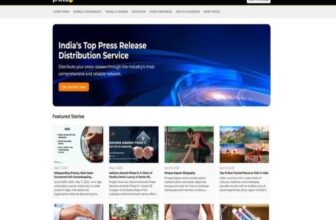
In 2025, healthcare is rapidly evolving with the help of advanced IT solutions that are reshaping patient care. From AI-powered diagnostics to real-time health monitoring apps, technology is improving treatment accuracy, patient engagement, and operational efficiency. These innovative healthcare IT solutions are setting new standards for delivering faster, safer, and more personalized medical services worldwide.
Key Healthcare IT Solutions in 2025
1. Artificial Intelligence (AI) in Diagnostics
AI has a crucial part in healthcare to enable early disease spotting and exact treatment. AI-powered tools examine medical images, forecast patient results, and spot patterns that humans might miss. For instance:
- AI systems can spot cancers at their earliest points.
- Smart forecasts enhance tailored care plans.
These abilities cut down on human mistakes and boost diagnostic precision, making AI a must-have in today’s healthcare processes.
2. Telemedicine and Remote Care
Telemedicine keeps growing beyond video visits. In 2025, it includes:
- Live remote tracking through wearable gadgets.
- AI-powered symptom checks to manage long-term illnesses.
- Linking with digital health records to smooth out care coordination.
This tech helps patients in rural areas see specialists and makes healthcare delivery more efficient.
3. Hospital Management Software
Hospital management software makes tricky office tasks easier, like booking appointments, billing, and keeping patient records. By doing these jobs , hospitals can:
- Work more .
- Take work off staff’s plates.
- Pay more attention to patient care.
To find out more about hospital management software solutions, check out Arobit’s healthcare services.
4. Better Data Security
As healthcare data breaches increase, strong cybersecurity measures are crucial. Healthcare organisations are using:
- Advanced encryption methods.
- Systems that require multiple forms of authentication.
- Blockchain technology to share data .
These steps help comply with rules like HIPAA and protect patients’ private information.
5. Systems Working Together and Healthcare APIs
When systems can work together, it allows for easy data sharing between different healthcare setups using standards like Fast Healthcare Interoperability Resources (FHIR). This offers benefits:
- It helps doctors make better decisions.
- It gives patients more control over their health data.
- It allows care providers to work together more effectively.
6. Generative AI to Boost Admin Efficiency
Generative AI is changing how admin work gets done by automating routine jobs like:
- Writing up clinical notes.
- Draughting messages to patients.
- Handling coding and billing.
This cuts down on work for healthcare staff, so they can spend more time giving good care.
7. Health Tech You Can Wear
Devices like smartwatches and sensors you can put in your body keep track of health in real time. They measure things like heart rate, blood sugar, and how well you sleep. In 2025:
- Doctors use data from wearables to make care plans just for you.
- Patients can take charge of their health more .
8. Healthcare in the Cloud
Cloud systems give healthcare groups IT setups that can grow. The main perks are:
- Keeping patient data safe.
- Backing telehealth platforms.
- Better teamwork among medical staff.
Cloud computing also helps with advanced analytics and AI tools to improve how decisions are made.
Conclusion
Healthcare IT solutions have a promising future as new tech keeps changing patient care in 2025. From AI to help diagnose to cloud computing and wearable gadgets, these new tools improve healthcare work, stay safer, and reach more people. When healthcare groups use these cutting-edge answers, they can get better results while making their work smoother.
FAQs
Q1. What are healthcare IT solutions?
Healthcare IT solutions are technologies that aim to boost patient care, streamline operations, and improve healthcare outcomes. Some examples include AI tools for diagnosis, platforms for telemedicine, software for hospital management, and wearable devices for health monitoring.
Q2. How does telemedicine benefit patients?
Telemedicine makes healthcare services more accessible by allowing virtual consultations, remote monitoring, and sharing of data in real-time. Patients in rural or underserved areas find this helpful.
Q3. What is hospital management software?
Hospital management software handles administrative tasks such as setting up appointments, handling bills, and keeping patient records. This boosts operational productivity and lets staff devote more time to caring for patients.







